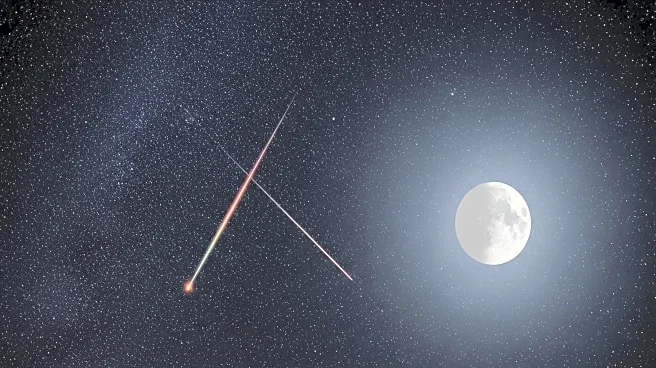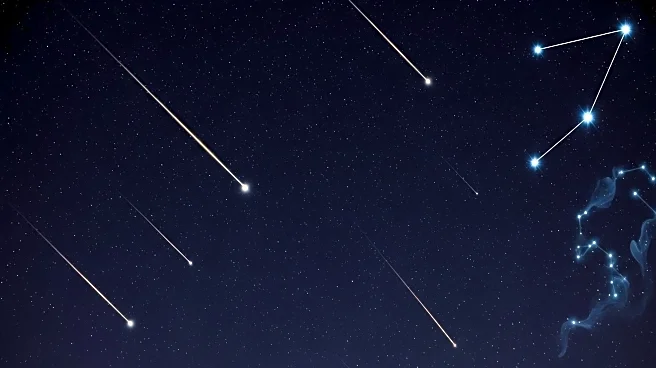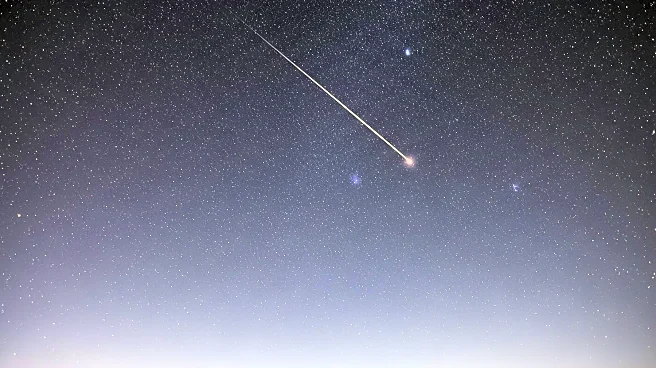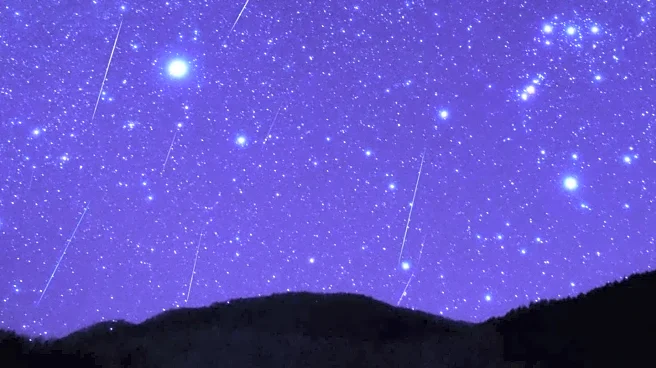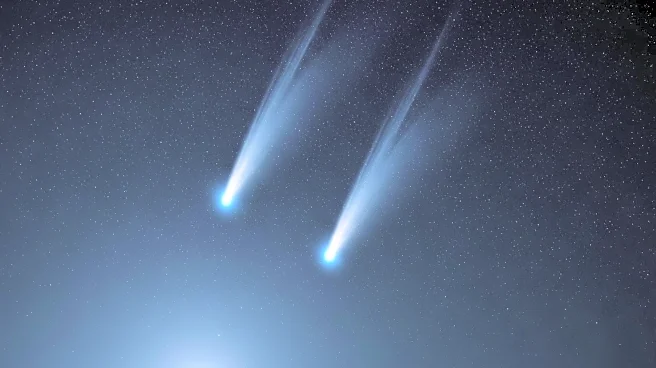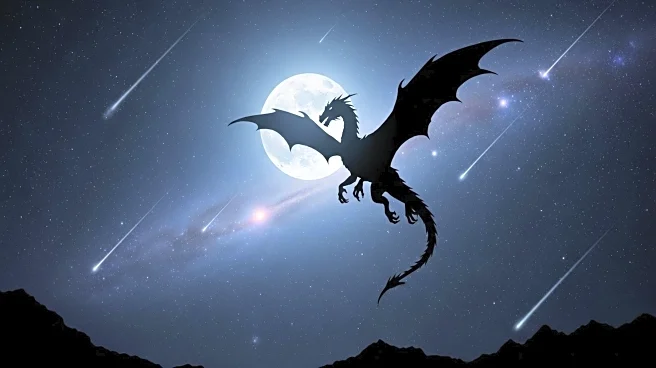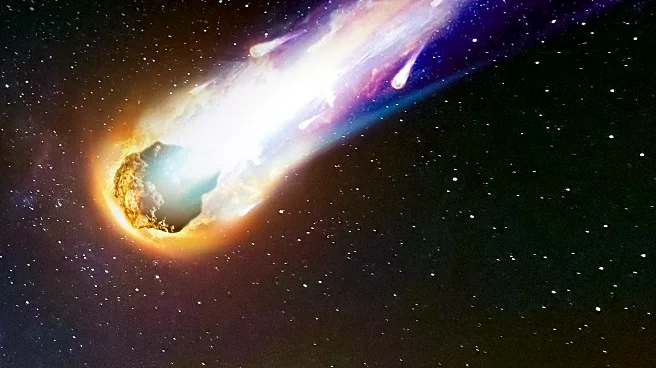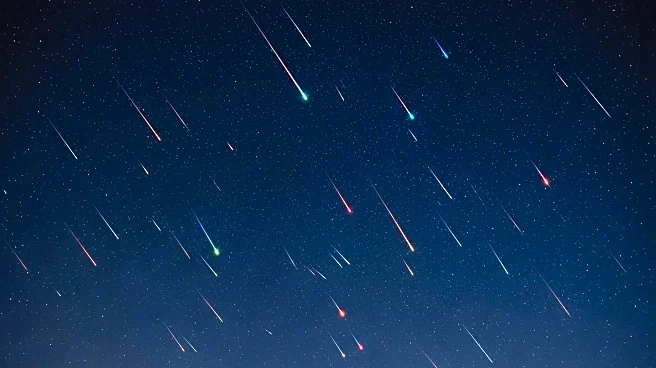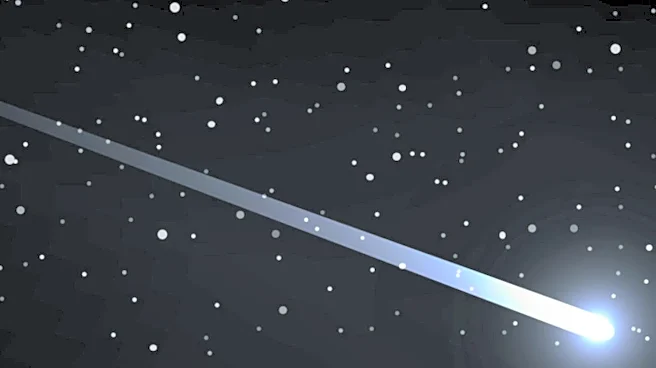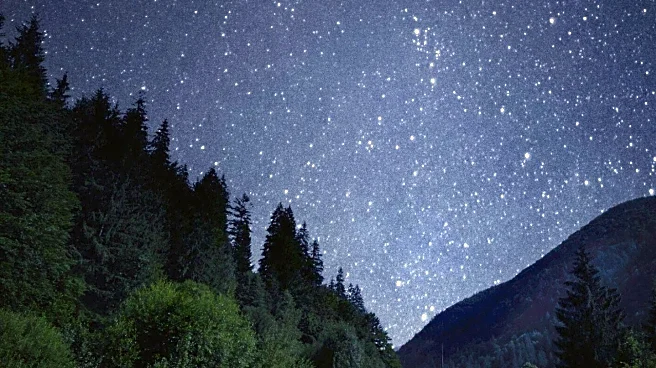What's Happening?
The Delta Aurigid meteor shower is peaking tonight, October 11, with meteors appearing from the constellation Auriga. This shower is active from October 10 to 18, and during its peak, up to two meteors per hour can be seen under ideal conditions. The presence of a waning gibbous moon, which rises alongside Auriga, poses a challenge for viewing fainter meteors. Observers are advised to look for meteors in the predawn hours when the radiant is high overhead. The Delta Aurigids share the sky with other meteor showers, including the Southern Taurids and Orionids.
Why It's Important?
Meteor showers like the Delta Aurigids provide an opportunity for amateur astronomers and enthusiasts to engage with the night sky. Despite its low meteor count, the shower offers a chance to practice observation skills in preparation for more prominent events like the Orionids. The presence of multiple meteor showers simultaneously enriches the skywatching experience, allowing observers to witness a variety of celestial phenomena. Such events can stimulate interest in astronomy and encourage educational activities related to space science.
What's Next?
As the Delta Aurigids conclude, attention will shift to the Orionids meteor shower, which peaks later in October. Observers are encouraged to use this period to familiarize themselves with the night sky and improve their meteor spotting techniques. The upcoming Orionids will offer a more substantial display, with better viewing conditions due to the absence of moonlight. Stargazers should plan their viewing sessions in areas with minimal light pollution to maximize their experience.
Beyond the Headlines
Meteor showers like the Delta Aurigids contribute to our understanding of cometary debris and its interaction with Earth's atmosphere. Scientific studies of these events can provide insights into the composition and origin of meteors, enhancing our knowledge of the solar system's history. Additionally, the cultural significance of meteor showers, often linked to myths and legends, adds a layer of intrigue and fascination, connecting scientific observation with human storytelling.

